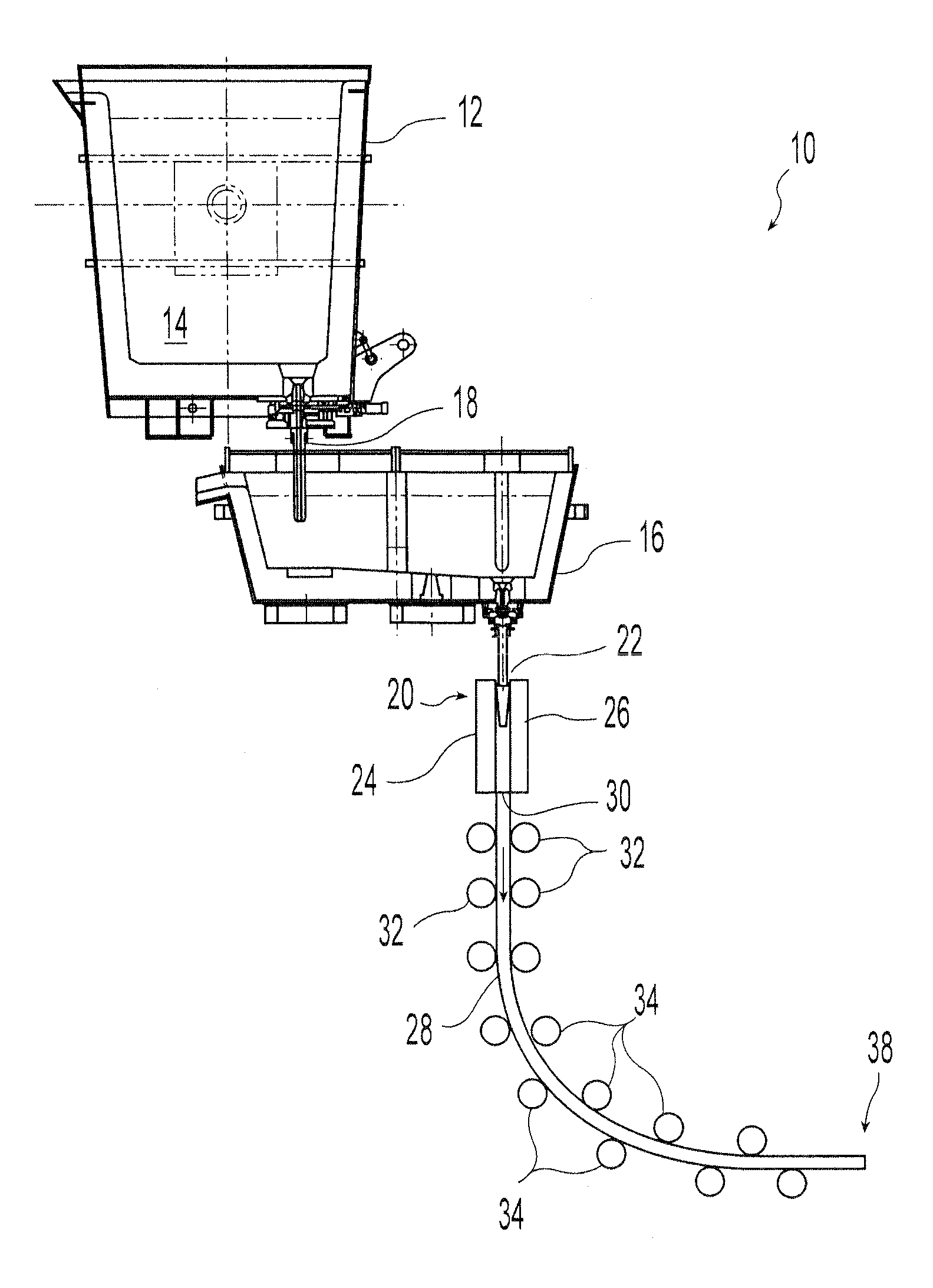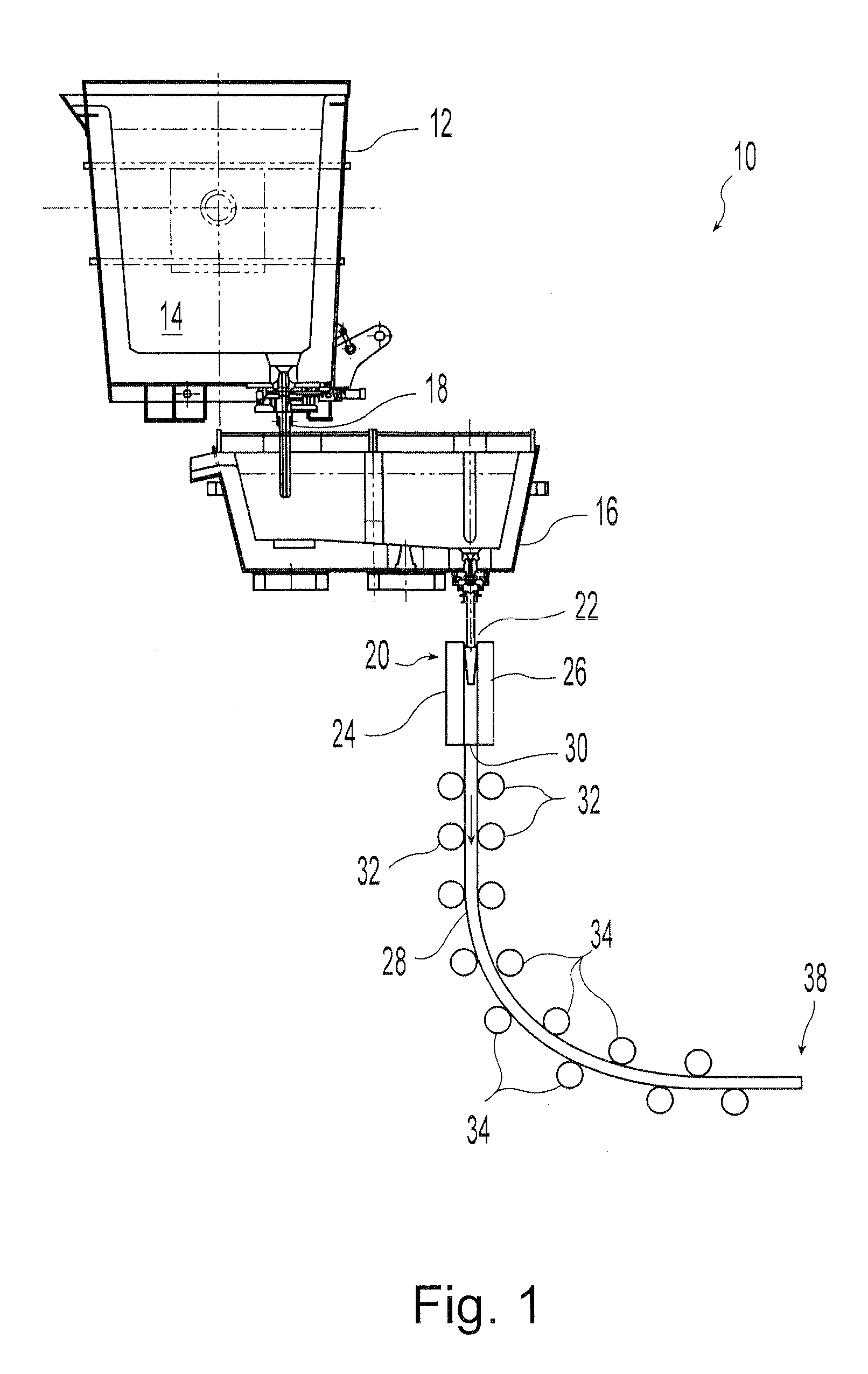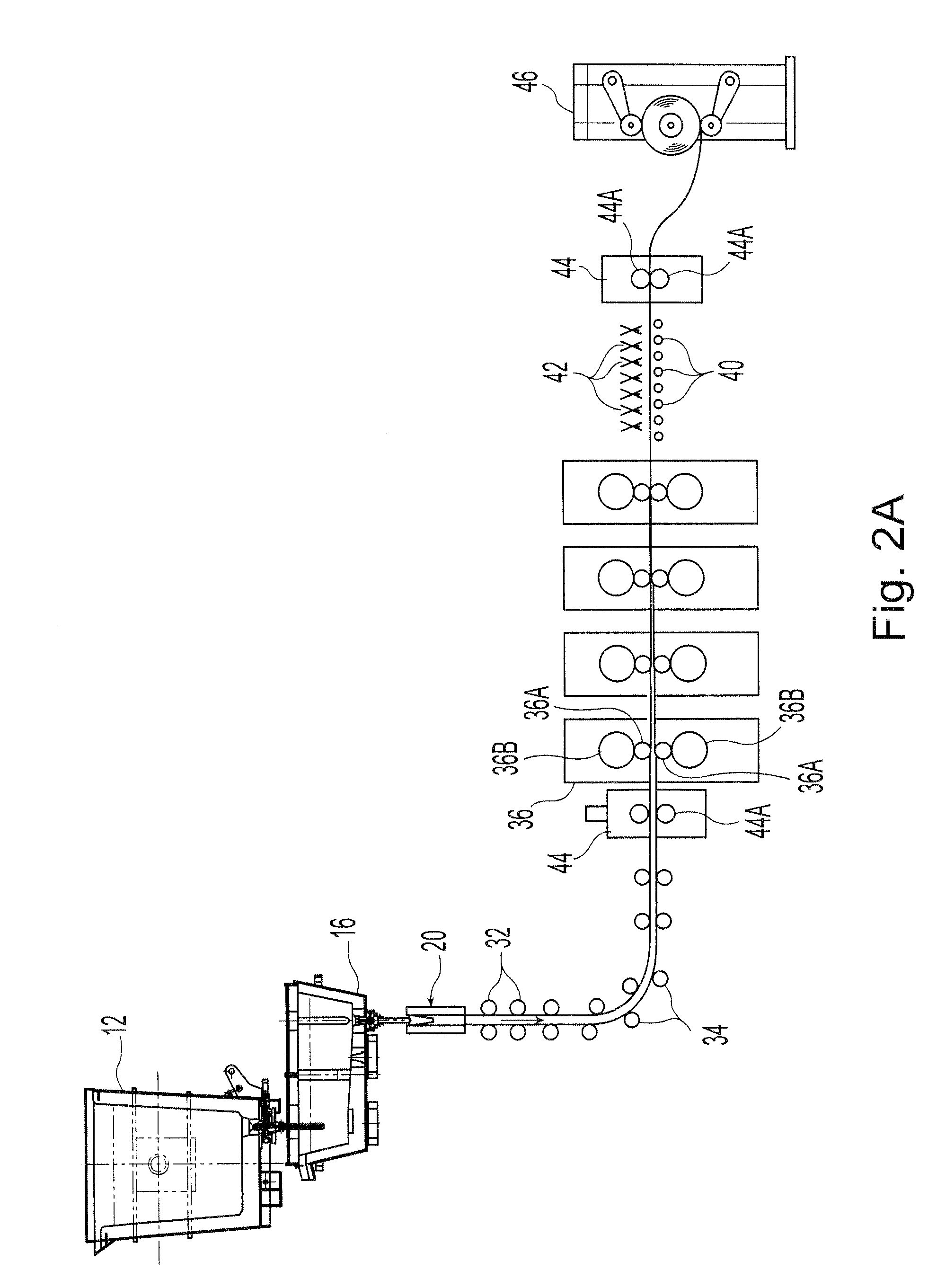Complex metallographic structured high strength steel and manufacturing same
a complex metallographic structure and high strength steel technology, applied in the direction of metal layered products, metal material coating processes, thin material processing, etc., can solve the problems of significant hurdles for successful implementation using the existing manufacturing infrastructure, prior advanced high strength steels exhibited shear fracture, edge fracture, edge cracking, etc., to reduce the strength of the steel sheet, reduce the impact toughness, reduce the formability and stretch the effect of the steel sh
- Summary
- Abstract
- Description
- Claims
- Application Information
AI Technical Summary
Benefits of technology
Problems solved by technology
Method used
Image
Examples
Embodiment Construction
[0071]FIG. 1 is a diagrammatical illustration of a continuous metal slab caster 10. The steel slab caster 10 includes a ladle 12 to provide molten steel 14 to a tundish 16 through a shroud 18. The tundish 16 directs the molten melt 14 to the casting mold 20 through a submerged entry nozzle (SEN) 22 connected to a bottom of the tundish 16. The casting mold 20 includes at least two opposing mold faces 24 and 26, which may be fixed or moveable. The SEN 22 delivers the molten melt into the casting mold 20 below the surface (“meniscus”) of the molten metal in the casting mold 20.
[0072]The width of cast strand 28 leaving the casting mold 20 is determined by the configuration of the caster mold faces at the mold exit at 30. The two opposing mold faces 24 and 26 are broad mold faces, and the casting mold 20 has two opposing narrow mold faces (not shown) to form a substantially rectangular configuration, or some other desired configuration for the cast strand 28. At least one pair of the mol...
PUM
| Property | Measurement | Unit |
|---|---|---|
| temperature | aaaaa | aaaaa |
| temperature | aaaaa | aaaaa |
| temperature | aaaaa | aaaaa |
Abstract
Description
Claims
Application Information
 Login to View More
Login to View More - R&D
- Intellectual Property
- Life Sciences
- Materials
- Tech Scout
- Unparalleled Data Quality
- Higher Quality Content
- 60% Fewer Hallucinations
Browse by: Latest US Patents, China's latest patents, Technical Efficacy Thesaurus, Application Domain, Technology Topic, Popular Technical Reports.
© 2025 PatSnap. All rights reserved.Legal|Privacy policy|Modern Slavery Act Transparency Statement|Sitemap|About US| Contact US: help@patsnap.com



